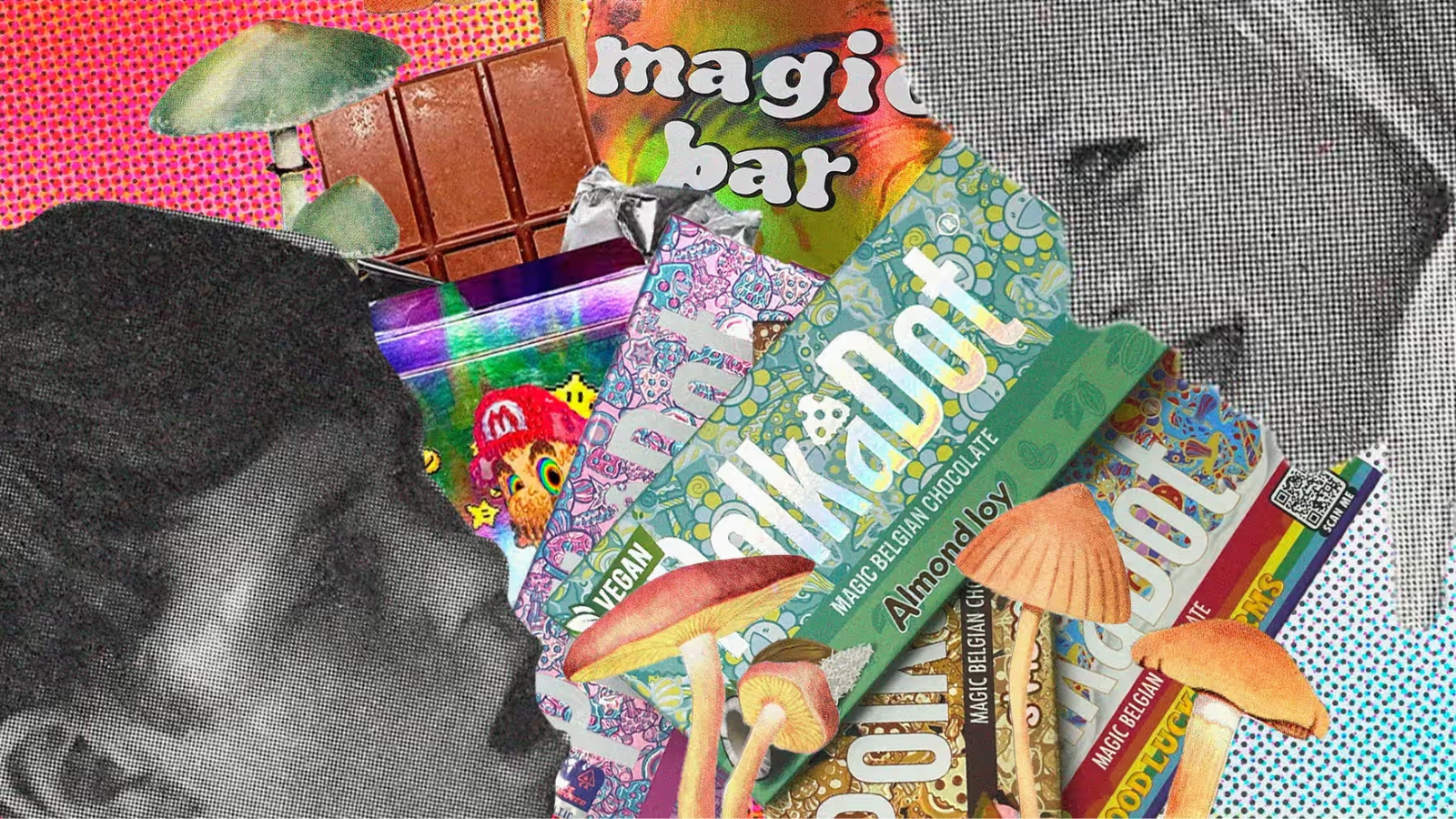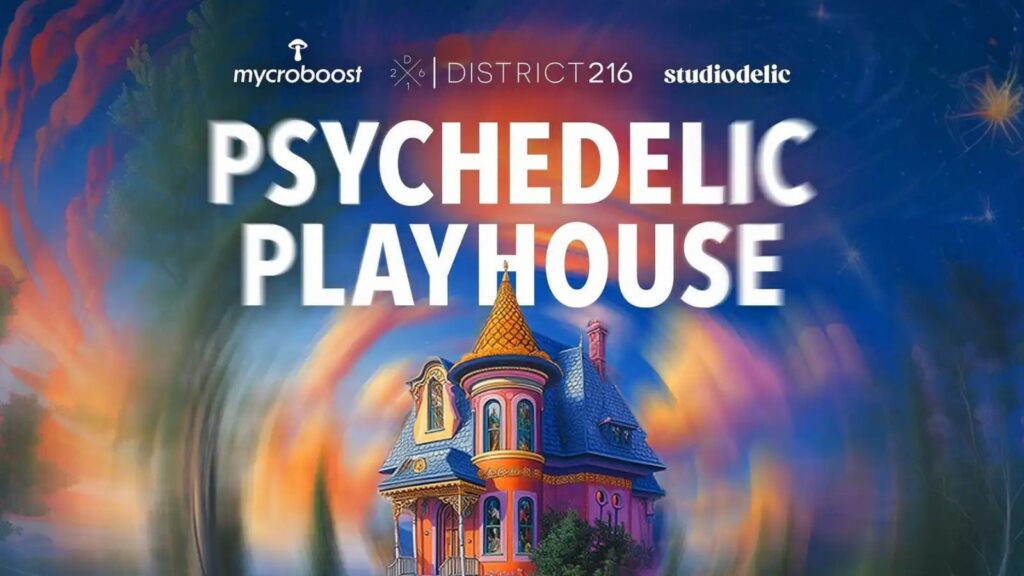The era of widespread underground psychedelic productization is upon us.
As public opinion, scientific discovery, and regulatory frameworks warm up to the myriad potential benefits of psychedelics, an unlicensed and unregulated underground market has emerged with professionally produced, branded, and distributed illicit products to supply the insatiable consumer appetite for these schedule-one substances.
A decade ago, you met your drug dealer in person in the 711 parking lot and purchased a sandwich bag full of bone-dry mushrooms or a sheet of LSD blotter with fractal designs on it in cash. The closest you could get to branded MDMA was the trademark-infringed logo stamped onto the tops of pills with names like Mitsubishi and Playstation—which, of course, had no connection to the megacorps whose likeness they were pressed in.
Suppose we keep going in the direction of psychedelic mainstreaming that it appears we are. In that case, it might not be long before we see multinational corporations rolling out their state-sanctioned psychedelic products.
Uber and Amazon are already throwing their hats in the ring of cannabis lobbying, which may be the first step towards the corporatocracy capturing the emerging market for several other substances that are currently being considered for removal from the Controlled Substances list and introduction into a legally regulated market.
So, what does the underground psychedelic market look like today? How can you know for sure what you’re consuming?
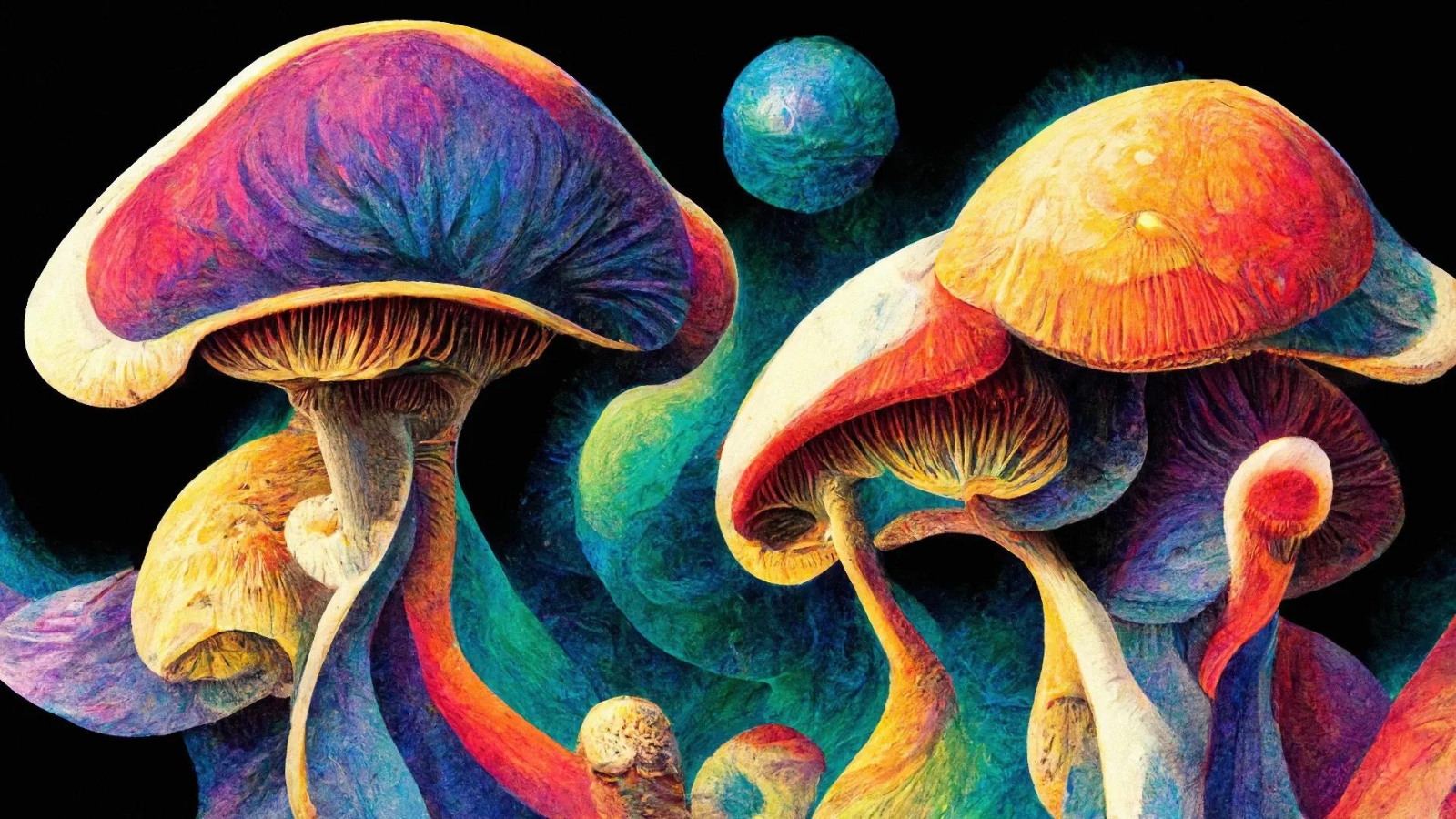
Black Market = Legacy Market
But before any of these prospective evolutions happen, we’re currently suspended in a strange sort of gray area between prohibition and a strictly legal access model for many drugs. To be clear, the branded psychedelic products referenced in this article are explicitly criminalized in the United States.
Although some of these types of products are available for legal purchase in smart shops in Amsterdam and boutique storefronts in Jamaica, the vast majority of these underground products are outright illegal in most jurisdictions. We don’t recommend anyone break the law, and this article is purely for educational purposes.
Today, thousands of professionally produced and branded variations of currently scheduled substances are readily available from numerous different access points courtesy of the ‘legacy market.’ The legacy market is a more accurate description of what has historically been known as the ‘black market.’
The couching of this trade in the context of a ‘legacy’ tradition pays homage to the fact that the use and exchange of psychoactive substances has only been a crime in most countries since the declaration of the War on Drugs in 1971, and prospered across the world for millennia before then.
The Surge in Supply and Demand
Thanks to widespread mainstream media coverage, anecdotal reports from trusted sources, and positive topline data coming out of clinical trial after clinical trial on behalf of the world’s most trusted academic research institutions, the public demand for these long-maligned and stigmatized substances has become insatiable.
This surge in demand has created a spike in production coming from underground producers and distributors. These purveyors increasingly operate in plain view and with public-facing brand activations, marketing, and distribution networks.
How we got to this point of professional underground psychedelic productization stems from recent changes to the regulatory scheduling of hemp. Many cannabis companies invested in extraction and manufacturing equipment in the wake of the Farm Bill of 2018, which removed hemp from the DEA’s list of controlled substances.
As the market for hemp and ‘legal cannabinoids’ began to flood the market, these companies began to pivot into spaces with less regulation and competition as a means of securing a return on their investment.
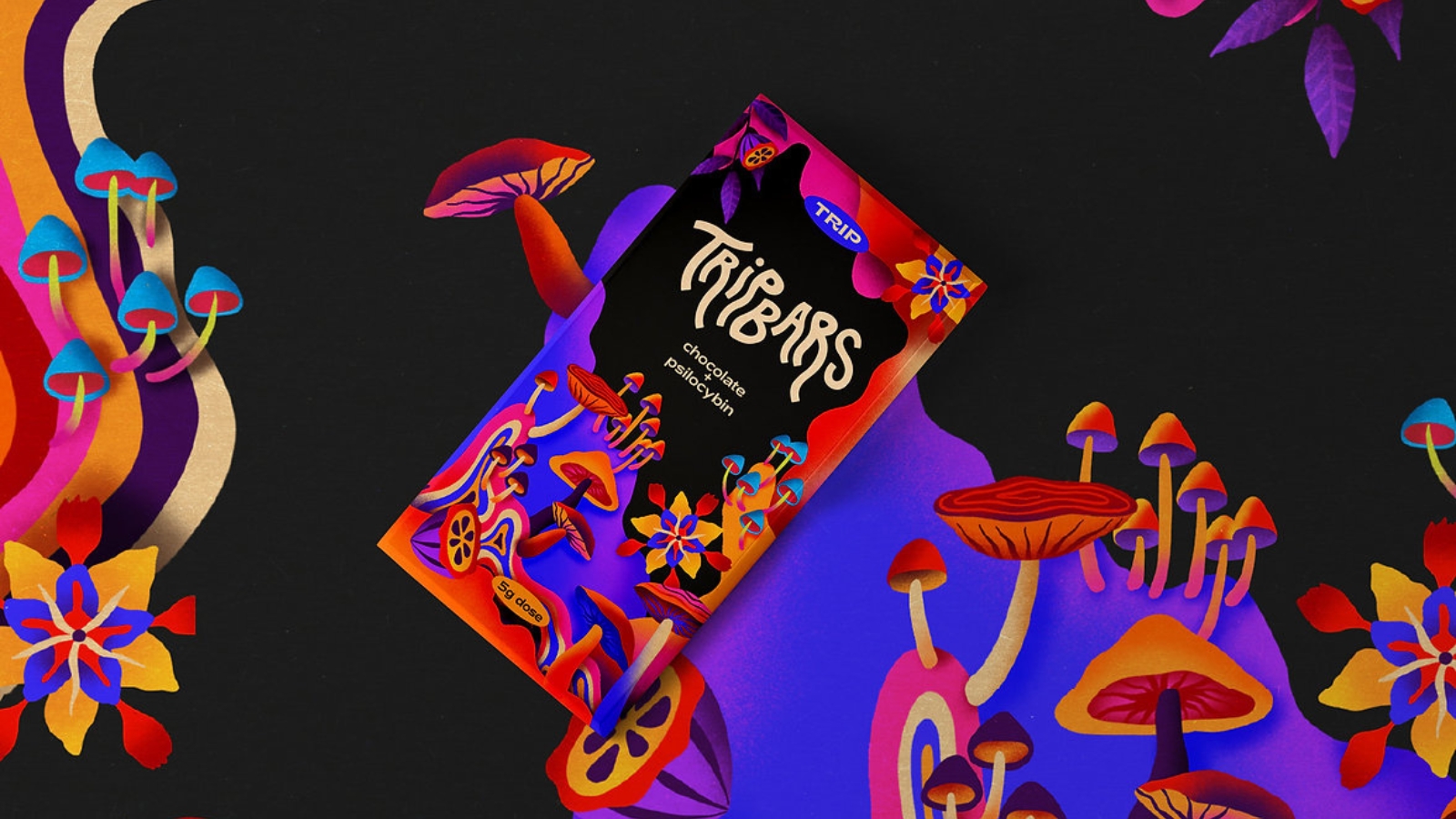
The Underground Psychedelic Marketplace
The illicitness of substances like psilocybin and MDMA is what makes the profit margins on selling these types of substances so high. Public perception and lessening societal stigmas on psychedelics, such as have occurred over the last few years, created a surge of demand and a deprioritization on the prosecution of producers and consumers of these substances deemed ‘beneficial for mental health.’
As oversimplified and potentially misleading as this sentiment may be given the current bursting of the ‘psychedelic hype bubble’ and the emergence of evidence that these substances are certainly not a panacea, and can potentially have deleterious mental health consequences if used irresponsibly.
For a number of these companies, the favorable social climate and consumer demand for psilocybin mushrooms and ‘empathogens’ like MDMA became a calculated risk worth taking. The streamlining of production processes and established distribution networks coupled with massive profit margins due to these unregulated substances has led to an explosion of professionally produced and branded legacy market psychedelic products.
The companies behind the products referenced here are not licensed and state-regulated enterprises, but many possess an advanced degree of sophistication nonetheless.
Chocolate bars, gummies, powders, nasal sprays, sublingual gel tabs, and countless other permutations of various psychoactive formulations in precisely dosed and standardized units replete with dosing information and educational resources on the packaging have turned the underground marketplace from the Wild West into a boutique shopping mall of sorts.
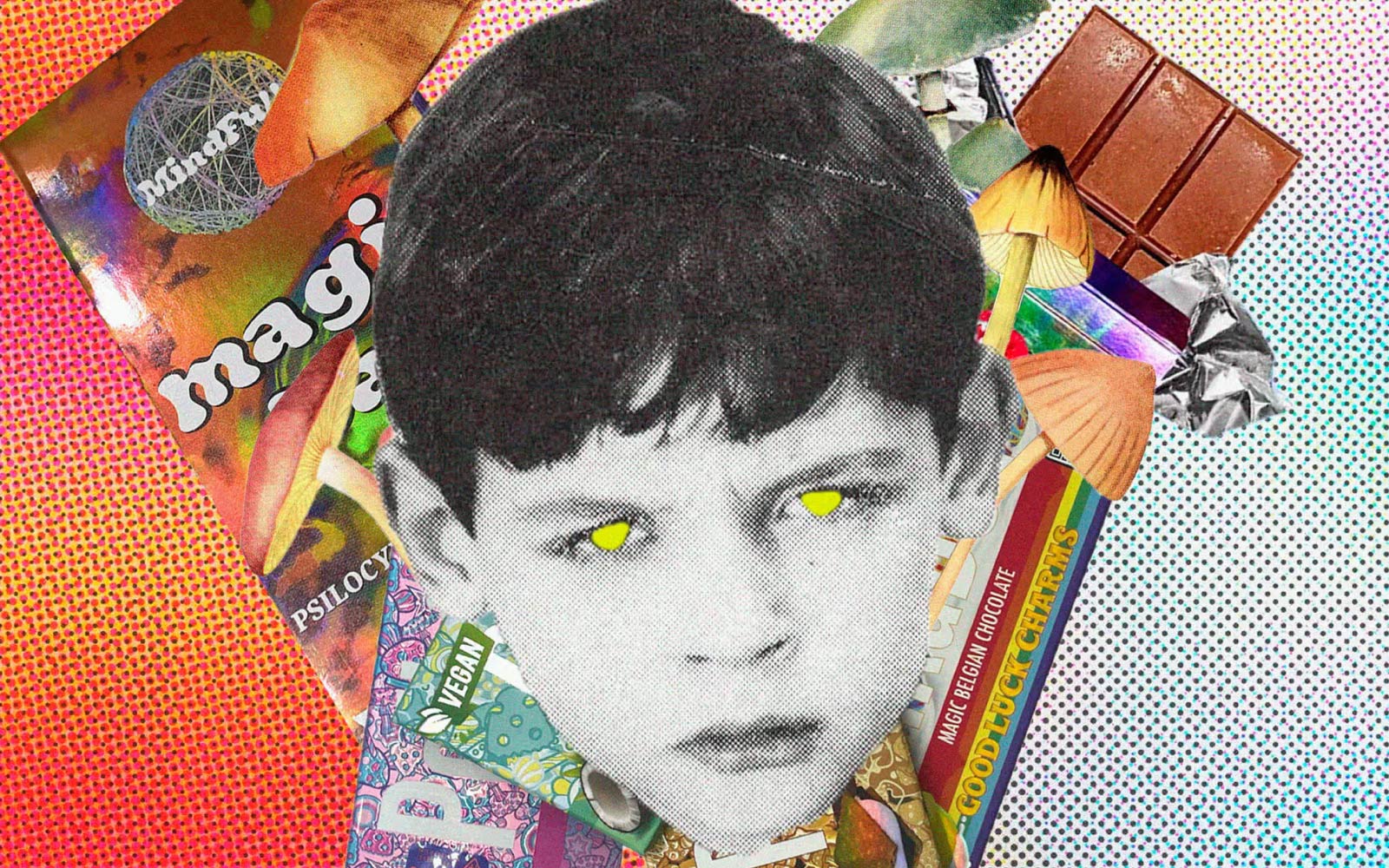
Challenges and Deceptions in Product Packaging and Labeling
The lack of regulation in the underground space comes with unique challenges and opportunities. For example, anyone can rip off your brand and sell their product under the guise of a trusted underground vendor. This happens all the time, with major producers like One Up and Polk-a-dot bars being routinely imitated. So much so that bulk amounts of their packaging are available for purchase on AliExpress or over the counter at various storefronts in some major cities.
There’s also the distinct possibility of mislabeling or contamination if your underground products are coming from a less scrupulous purveyor. However, the opportunists producing these types of scams are putting themselves out of business by doing so.
The legacy market is not that different from the above-board, regulated market in many ways —word gets around, and consumers who have been unfairly treated or ripped off will spread the word about the bad actors. The underground brands have every incentive in the world to treat their customers right, given the huge profit margin and extrajudicial considerations of their trade.
The Case of Psilocybin Chocolate Bars
Legacy market product labeling has come under increased scrutiny as of late. In June of 2023, an article in the Guardian titled “Cartoon Packaging and an ‘Inconsolable’ High: When Magic Mushroom Chocolate Gets Into the Wrong Hands” brought the conversation about unregulated psychedelic product packaging into the mainstream.
The article begins with a recent incident in Florida whereby a 6-year-old child accidentally consumed a psilocybin mushroom-laced chocolate bar that he usurped from his parents before consuming it and ultimately landing himself in the emergency room.
Thankfully, the physician on hand declared that the child was ‘fine,’ if not ‘overly sleepy.’ Yet another added layer of deception here is the fact that the extremely well-known ‘Polk-a-dot’ brand bar that the child consumed is widely recognized as often containing 4-AcO-DMT research chemicals in place of the magic mushrooms that the bars are advertised as containing.
What Is 4-AcO-DMT?
4-AcO-DMT, a “semi-synthetic psychoactive drug” converts to psilocin in the body after it’s metabolized. Psilocybin also converts to psilocin after ingestion, meaning that the two compounds share a similar enough profile that a leading psychedelic researcher has suggested 4-AcO-DMT as a viable alternative to naturally occurring psilocybin in pharmacological studies.
The ability to standardize and measure potency with 4-AcO-DMT may be advantageous, considering psilocybin mushrooms can vary greatly in potency across the same crop. Still, the more likely reason is that it’s much cheaper and has a longer shelf life.
Some people even claim to prefer 4-AcO-DMT over psilocybin due to its perceived ability to be less upsetting to sensitive stomachs and for its ability to provide a “distinctive visual crispness” according to one user.
Media Coverage and Public Education
We unequivocally do not advocate for people to purchase the unregulated branded products referenced in this text but remain firmly committed to harm reduction principles and educational outreach.
Harm reduction information and potentially life-saving drug test kits can be found through organizations like DanceSafe and Miraculix. At this point, given the rise of fentanyl poisonings across the United States, it should be standard practice to test any illicit substances you may be intending to consume regardless of their source.
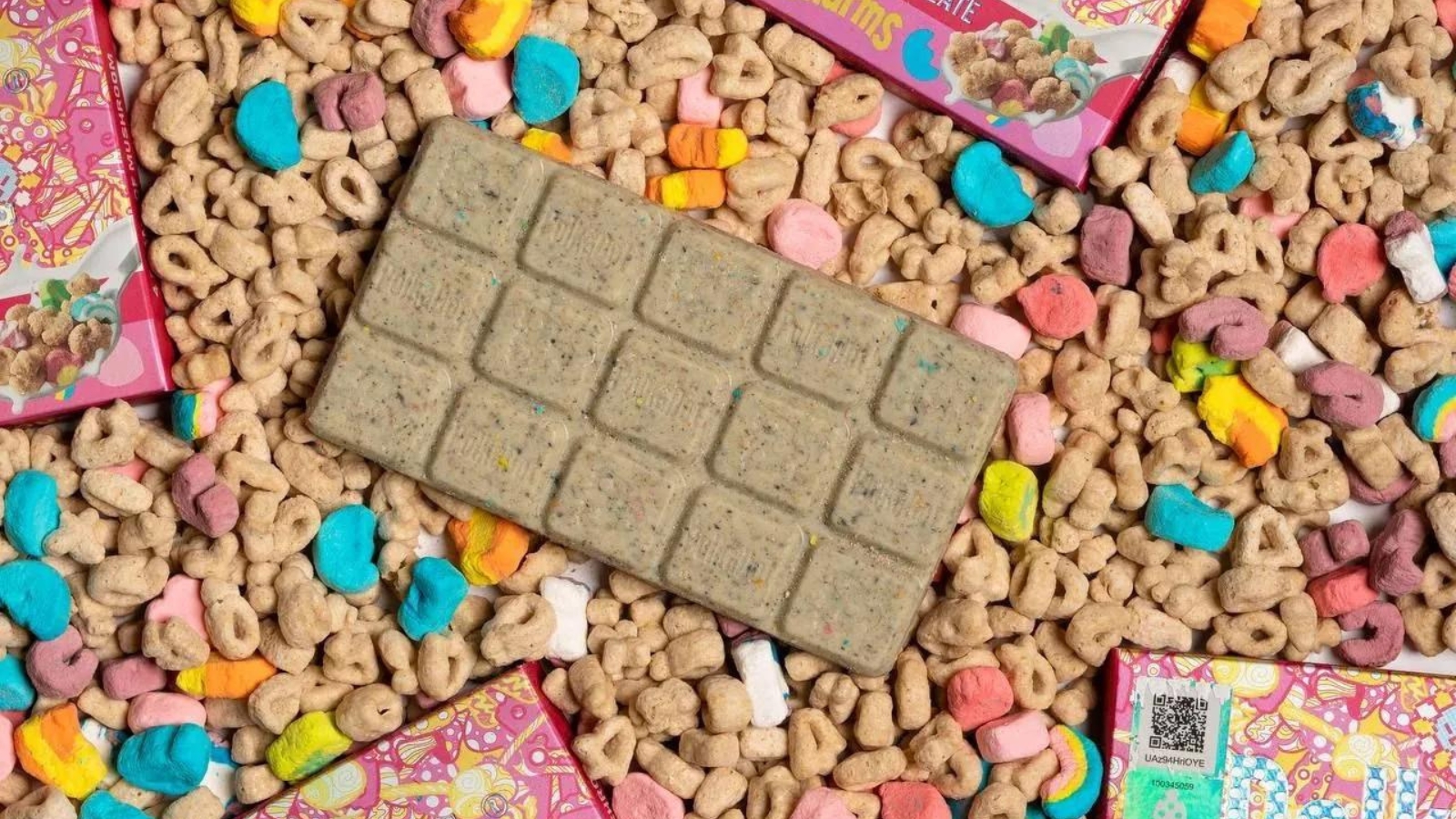
Looking Forward
As psilocybin mushrooms and other psychedelic products continue their rise in profile across mainstream society, the conversation about regulated access becomes increasingly approachable.
Zurich, Switzerland has already proposed legalizing cocaine, Colombia University Department of Psychology Chair Carl Hart has publicly revealed his penchant for recreational heroin use, and microdosing is practically a national pastime at this point.
Until such a day may come, underground producers must strive to educate consumers and self-regulate to the fullest extent possible. Unbiased journalism and public education are cornerstones in this process. At the end of the day, consumer demand is what drives the market. So, if enough consumers are properly educated about the nuances of the tactics deployed by some large-scale legacy market manufacturers, as outlined here, then the market will respond to whatever the consumer decides.
